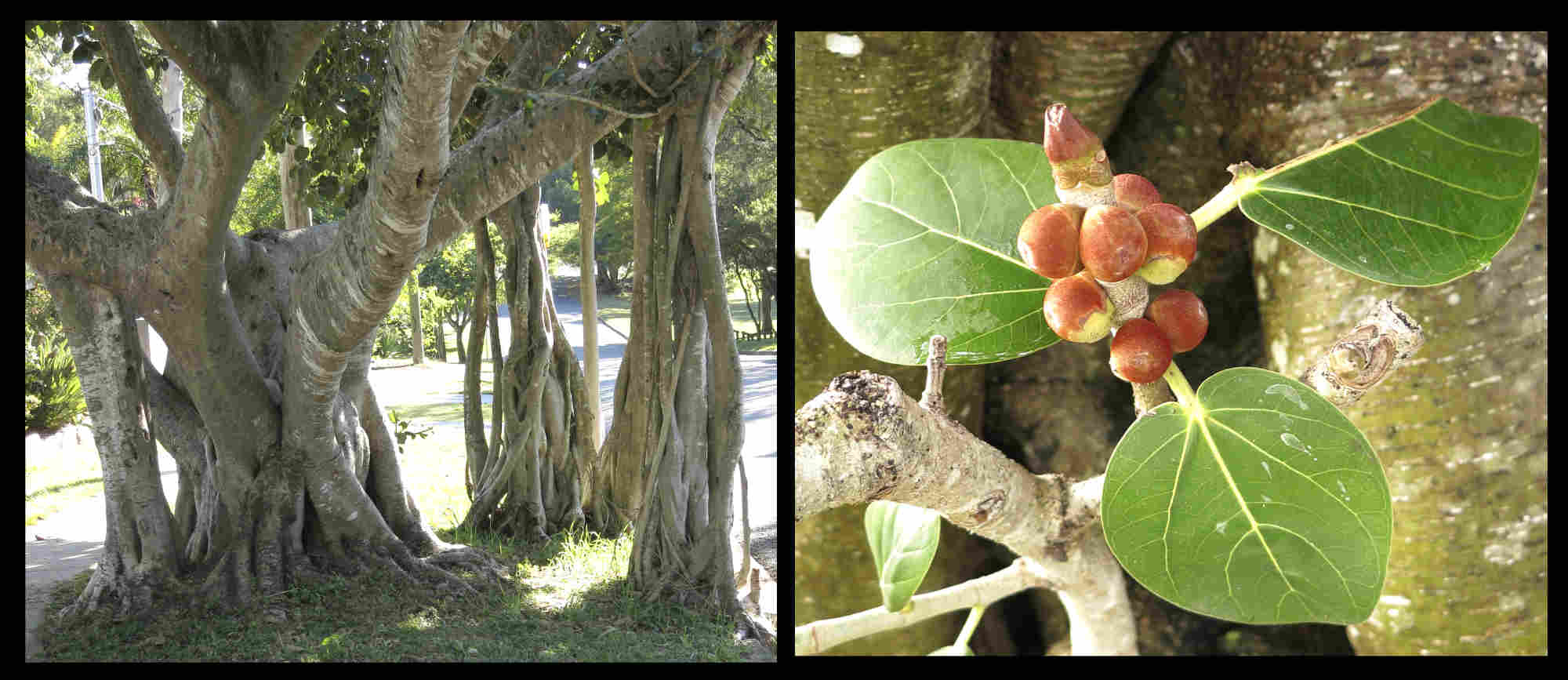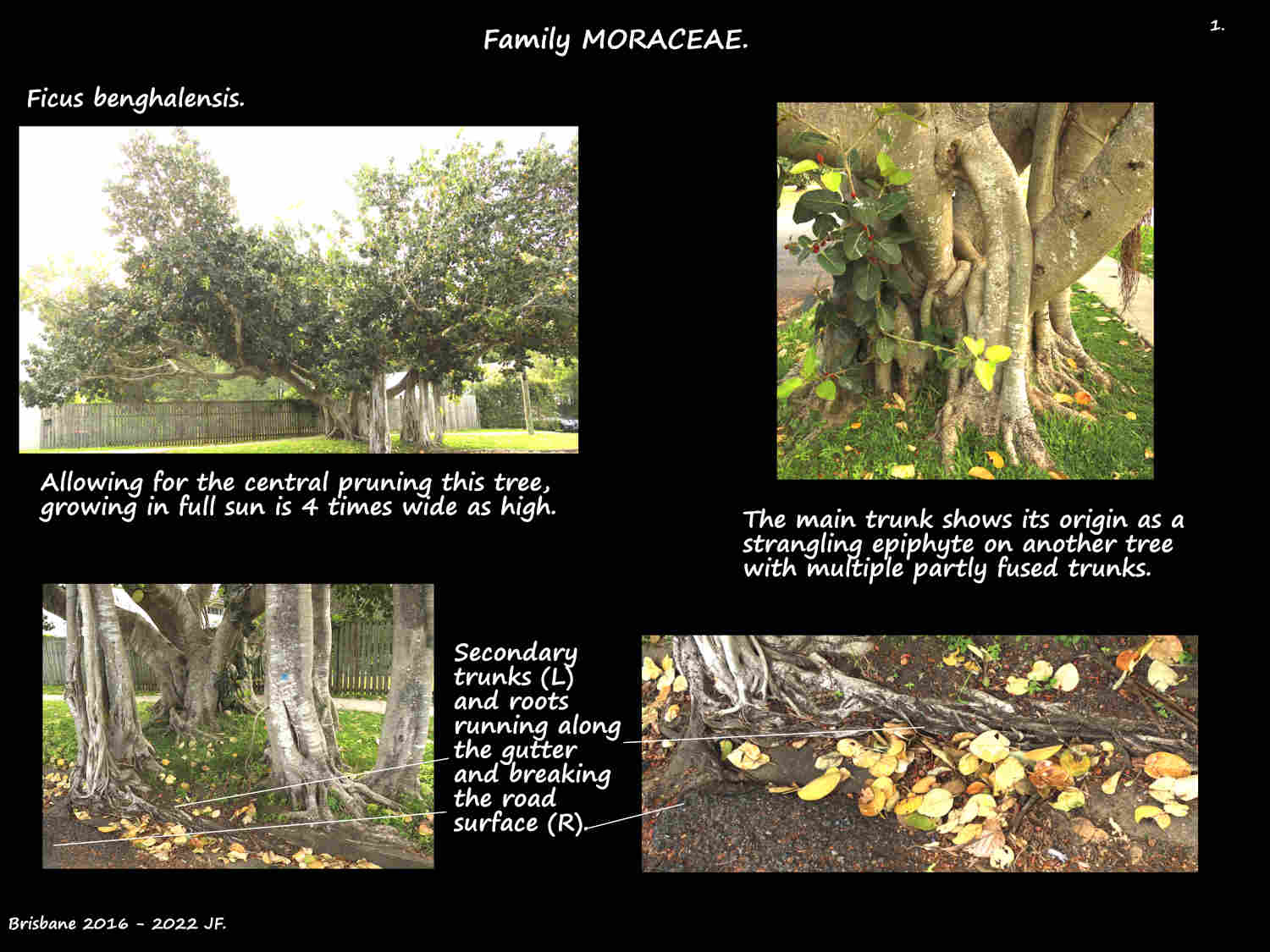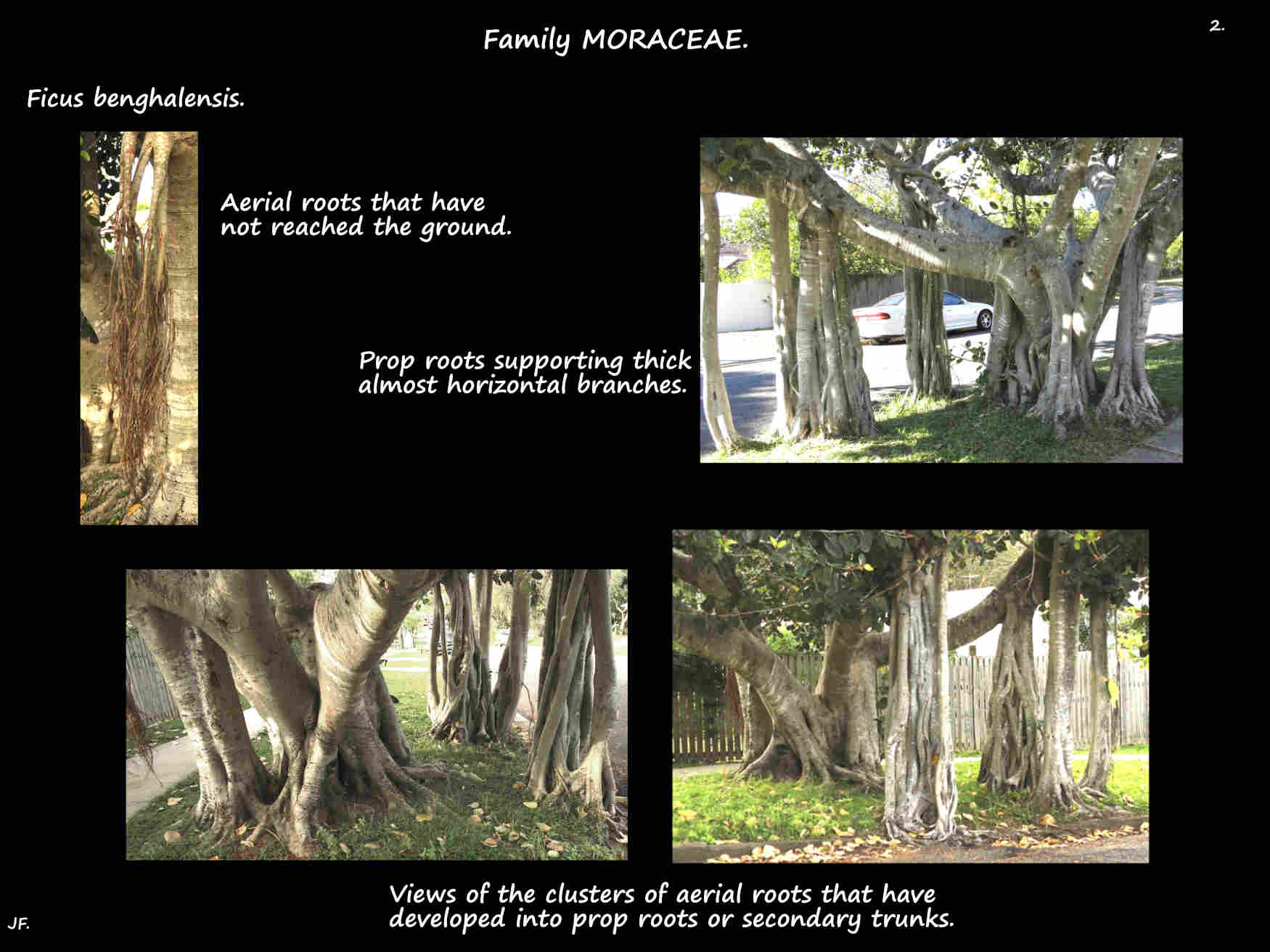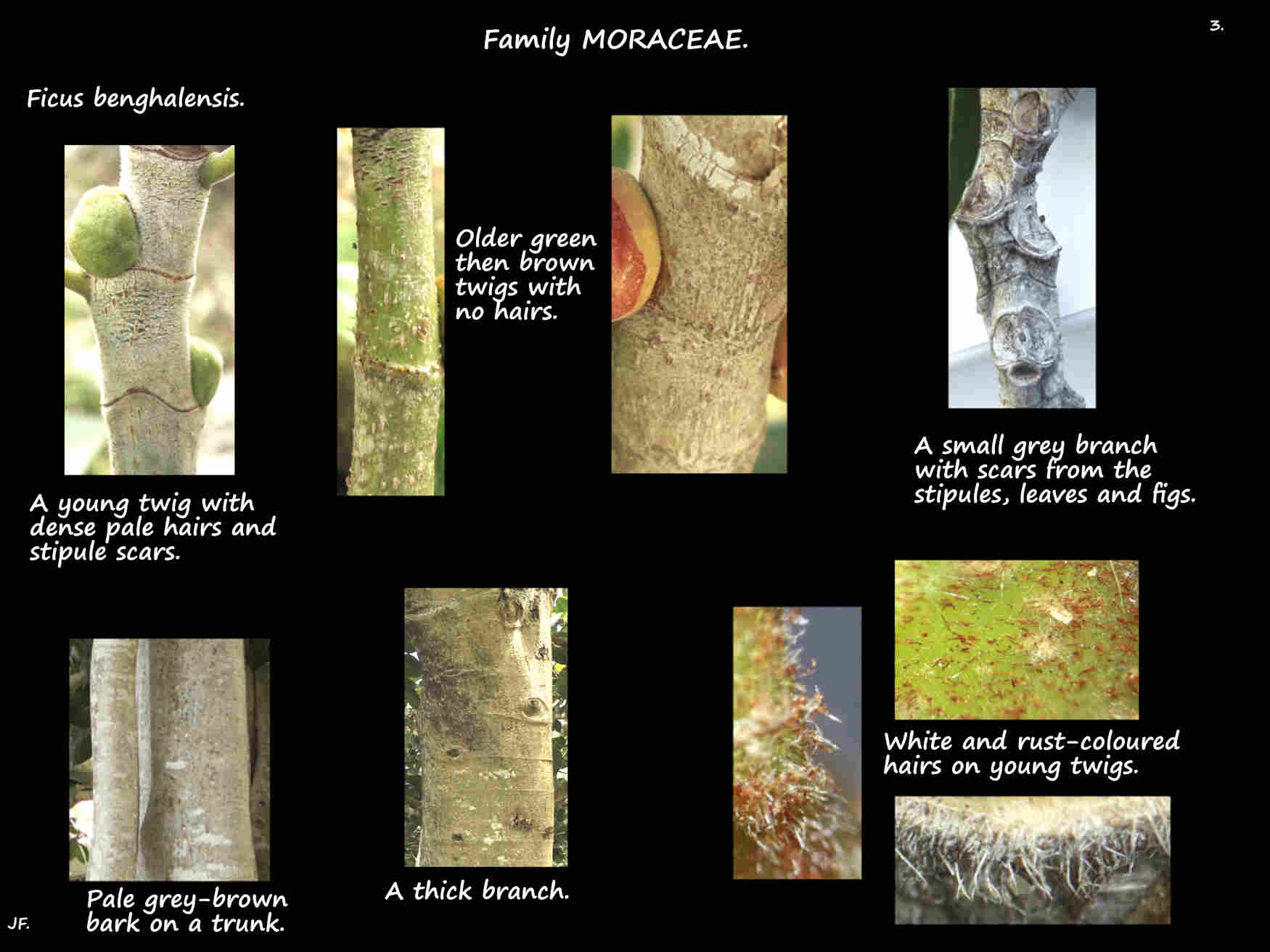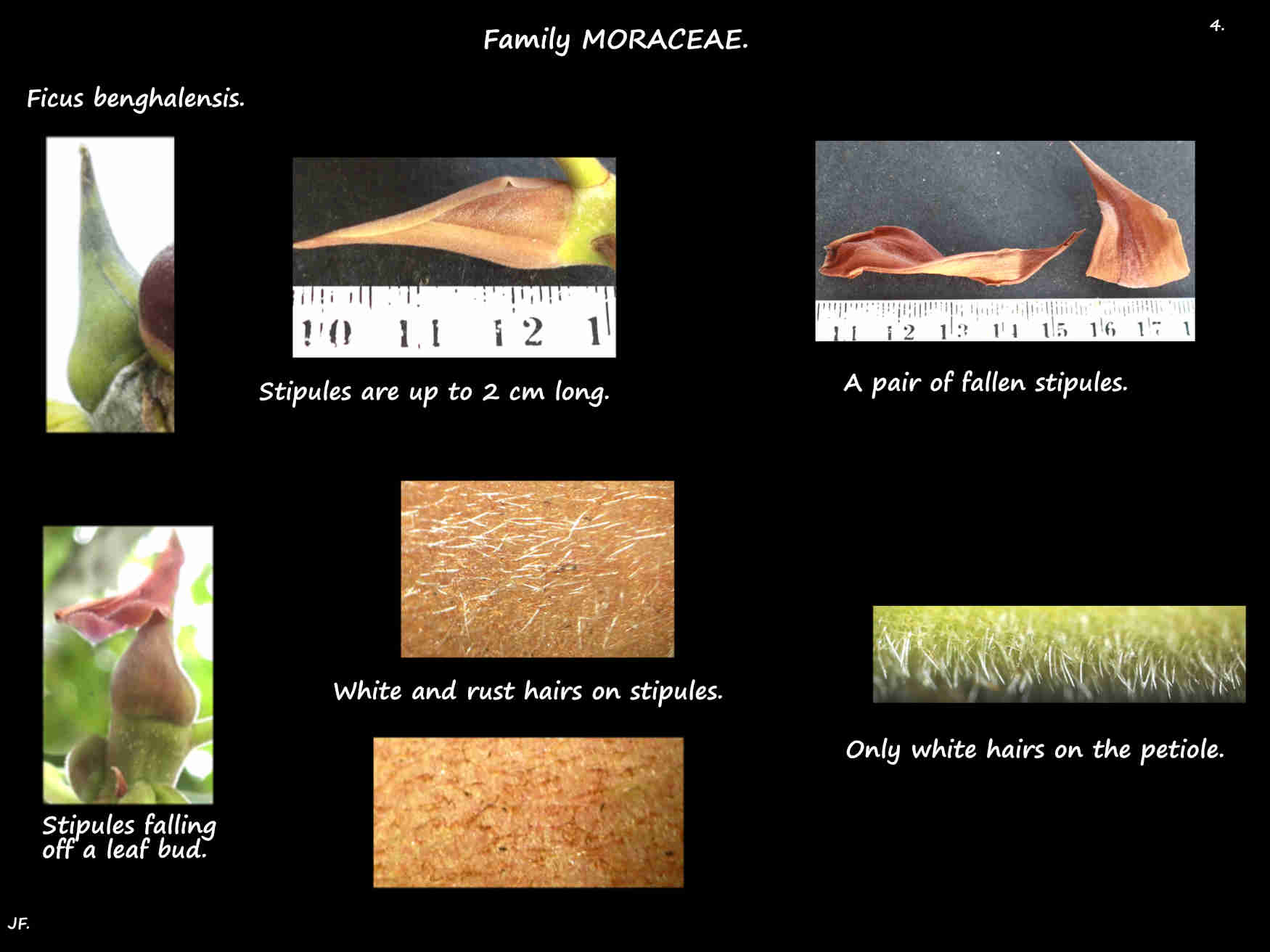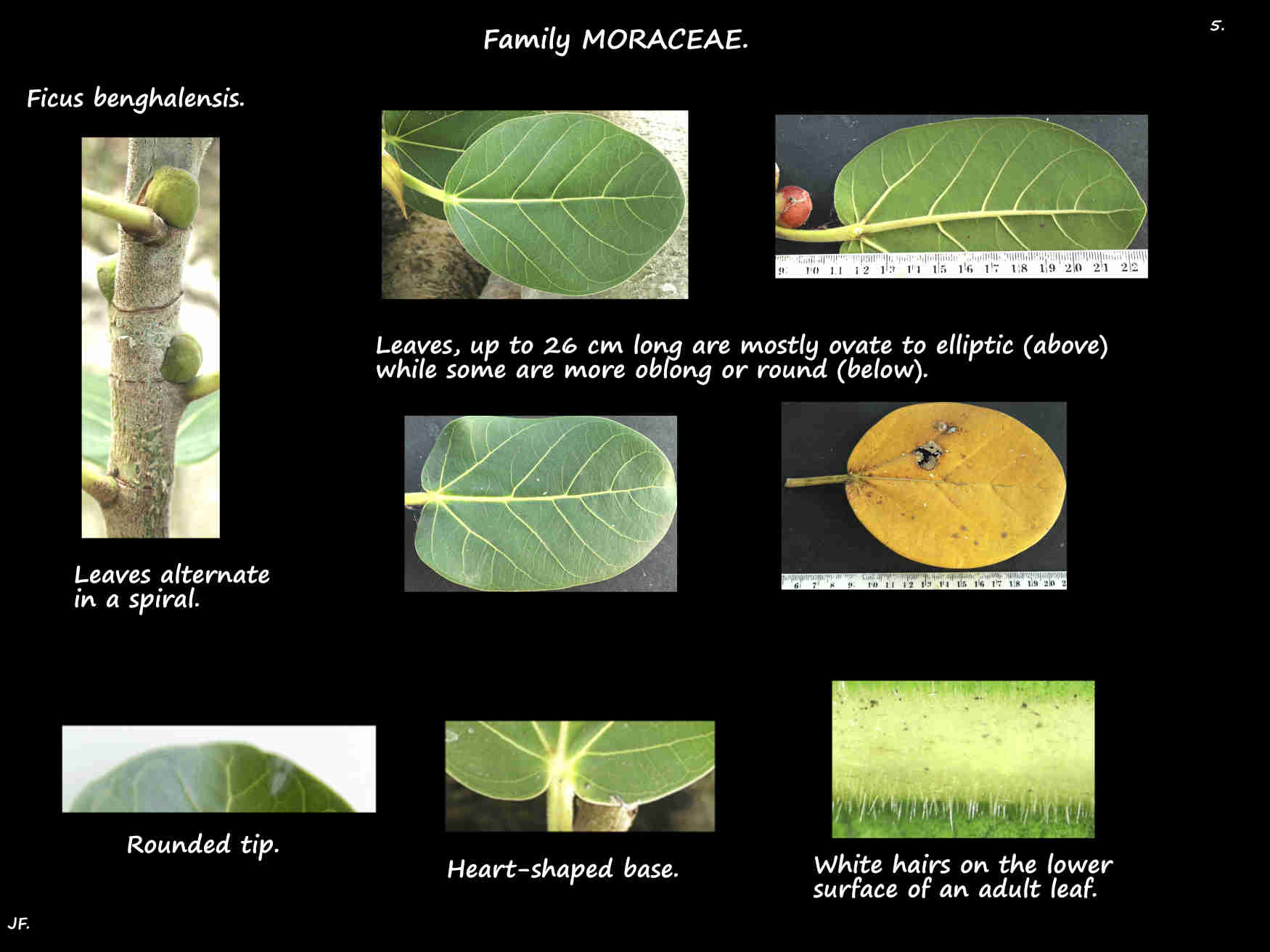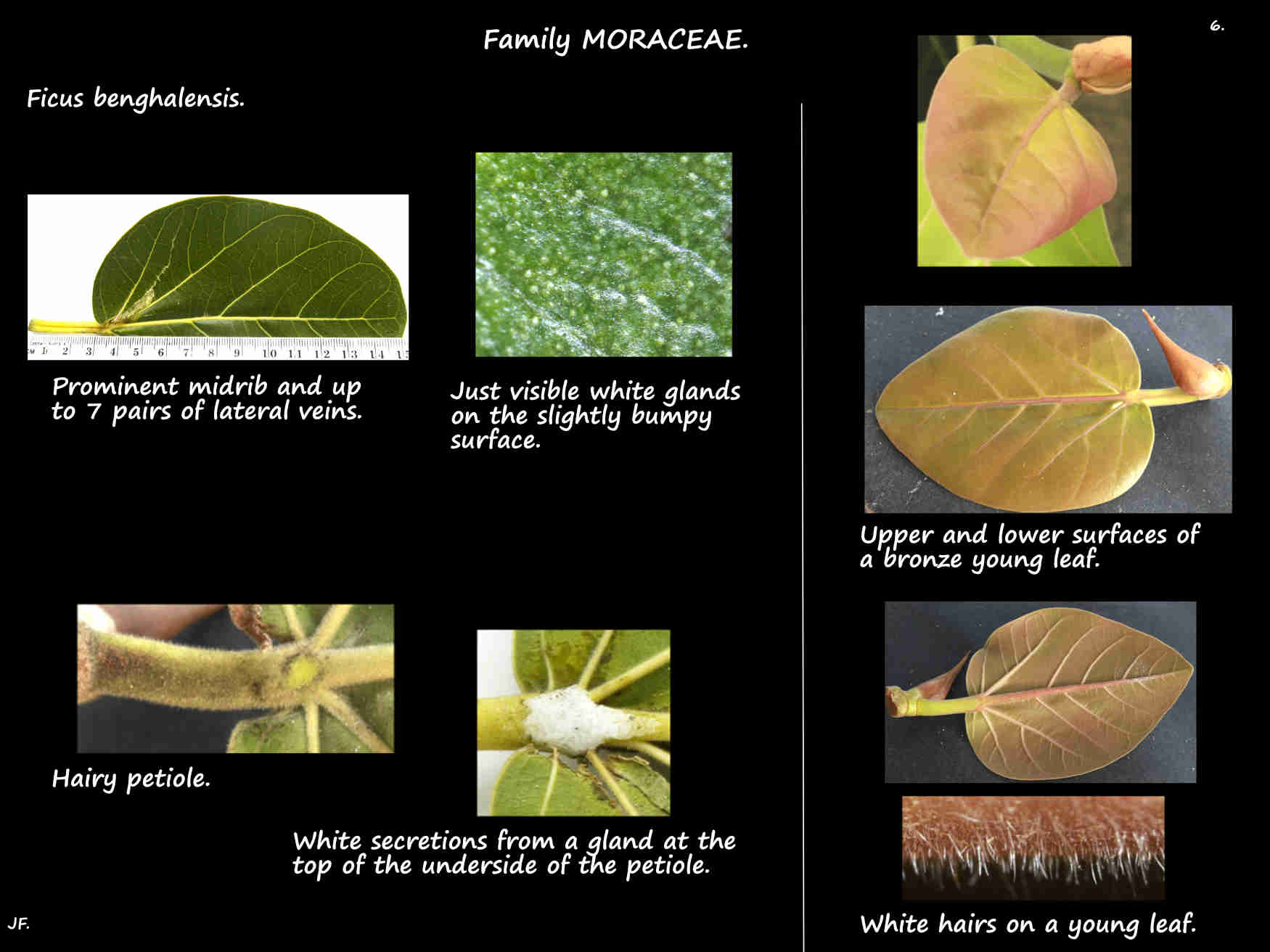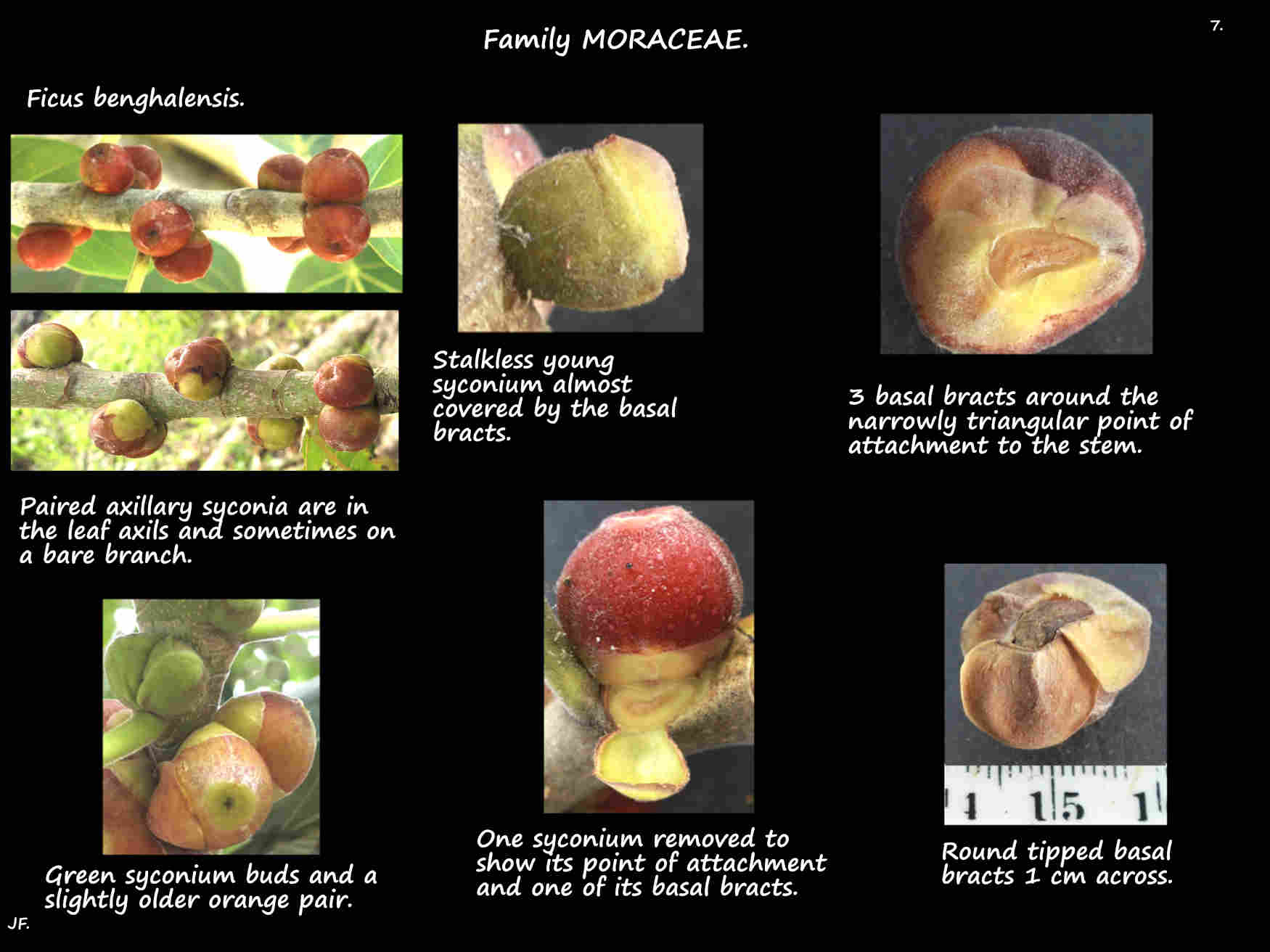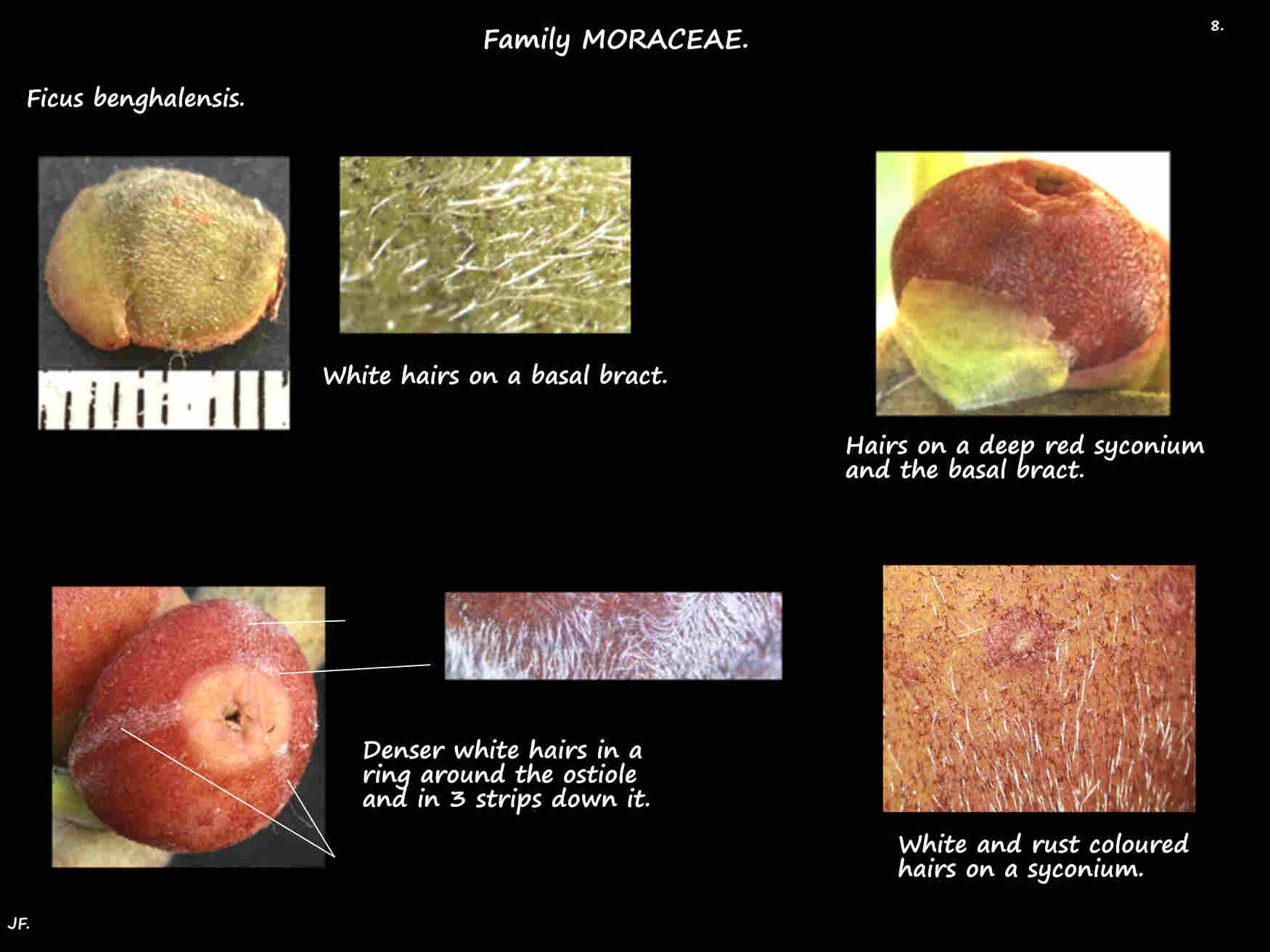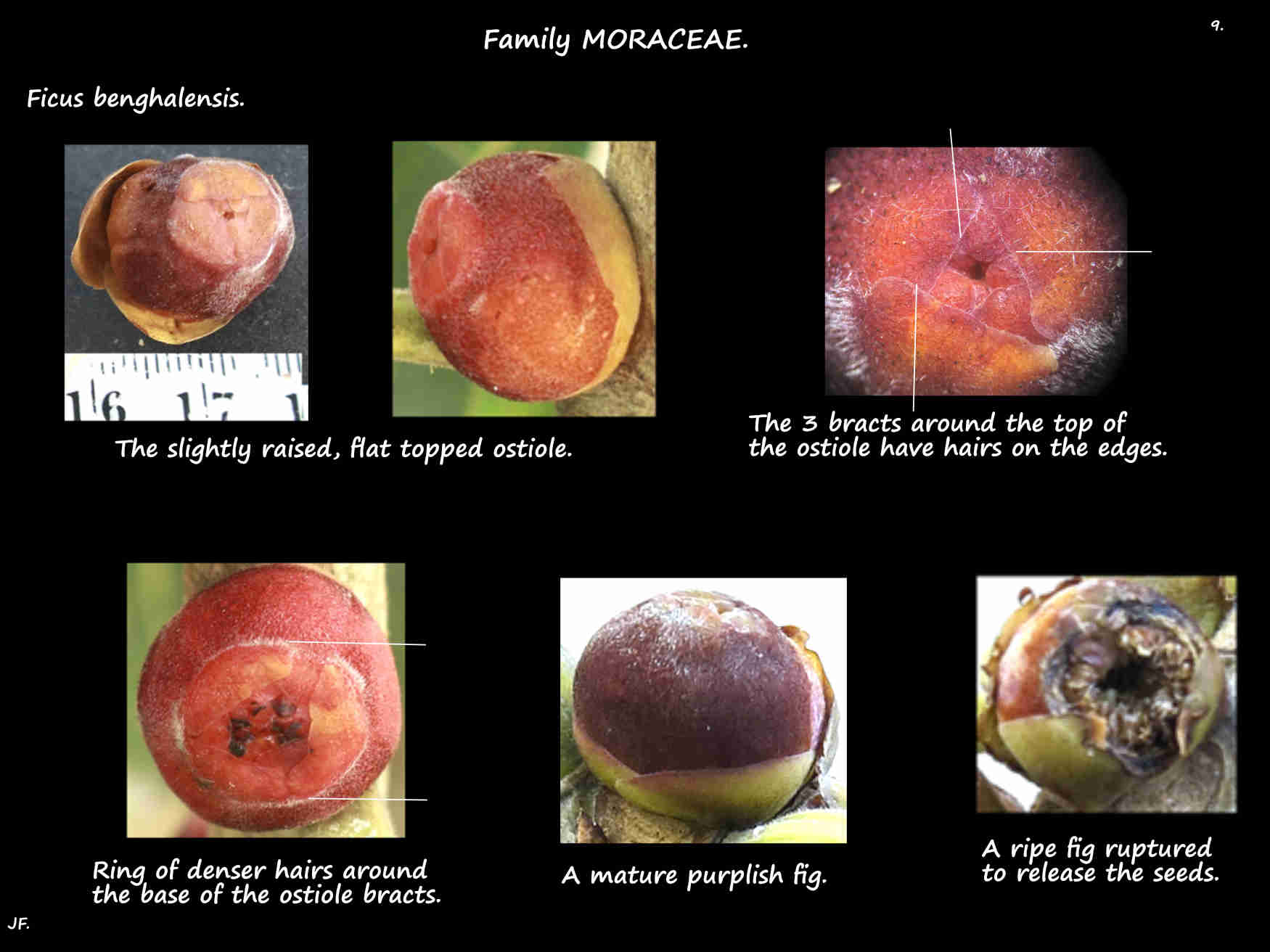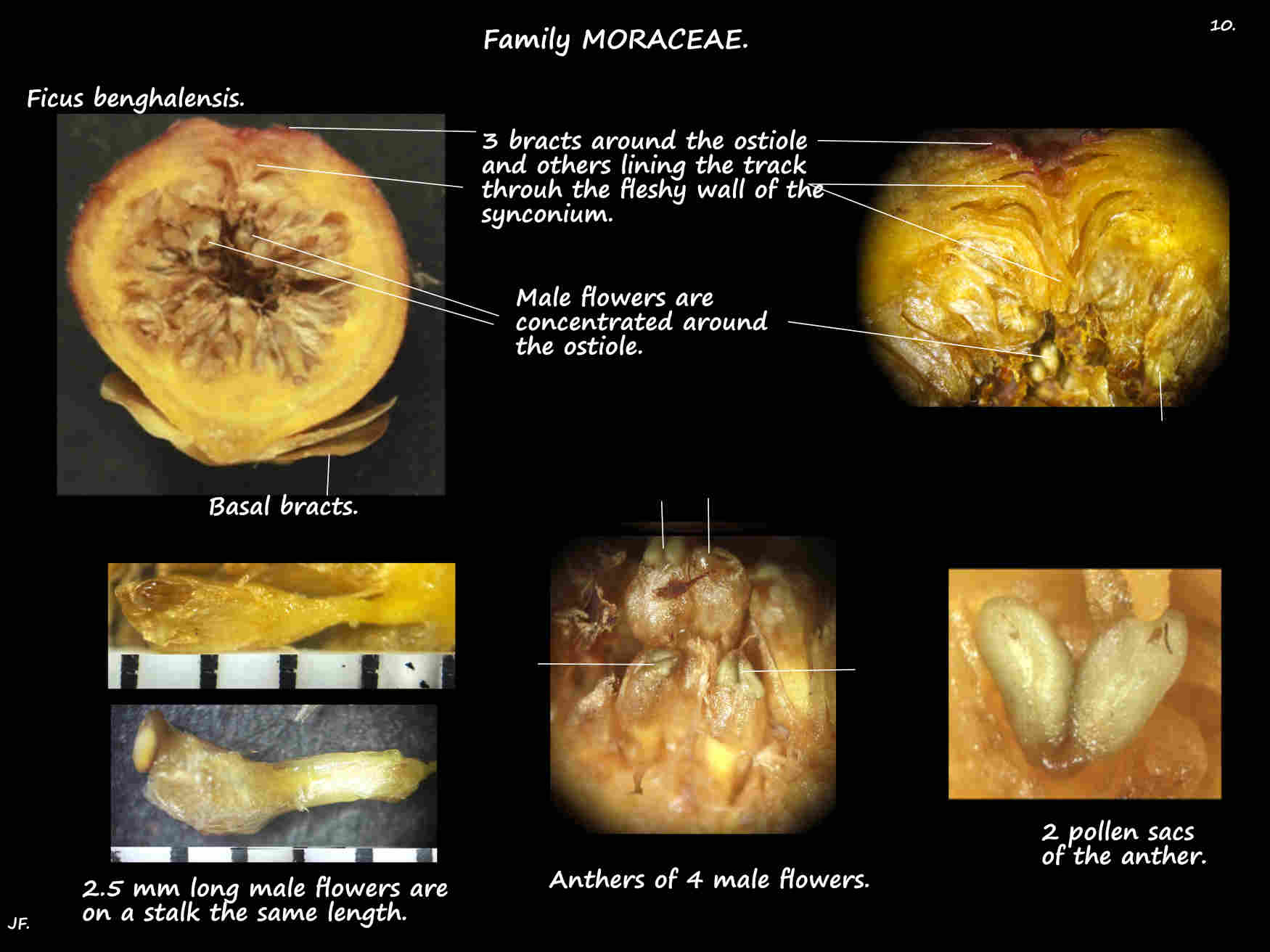Ficus benghalensis.
Family Moraceae > Genus Ficus > Subgenus Urostigma.
Native to the India and Pakistan area they are commonly known as Bengal fig, Indian banyan or just Banyan.
Over the years they have collected over 20 synonyms including the Urostigma genus name.
They are seen in Brisbane parks and large gardens and occasionally along streets.
Trees are invasive because of their potentially great size and the spreading roots.
They can start growing on almost any surface from the ground to cracks in walls, roads etc.
They commonly start as an epiphyte on another tree then send down aerial roots that develop into trunks
when they reach the ground.
The aerial roots commonly strangle and kill the host tree.
They can grow to 15 or even 30 m high and, with many secondary trunks and horizontal branches spread
over thousands of square metres.
Where they are in sunlight the spread is more horizontal while in the shade they are taller.
The bark is grey to brown and all parts of the tree exude white latex.
The small greyish twigs have soft hairs.
The evergreen canopy is dense with simple leaves alternately arranged in a spiral.
The thick petiole is often 2 to 3 cm long but up to 6 cm on the largest leaves.
Leaf buds are protected by lanceolate stipules around 2 cm long that leave a scar around the stem when they fall.
Petioles and stipules have short brown and white hairs.
The smooth-edged ovate to elliptic leaves can be up to 26 cm long and 20 cm wide.
The tip is rounded and the base rounded or slightly cordate (heart-shaped).
The midvein and the up to 7 pairs of lateral veins are prominent on both surfaces.
New leaves are bronze with hairs on both surfaces.
Mature dark green leaves have hairs underneath and sometimes a few on the upper surface.
The paired axillary inflorescences are a stalkless roughly spherical 2 cm wide syconium.
At the base are 3 wide overlapping bracts with rounded tips and hairs on the outer surface.
The syconium is hollow with fleshy walls and a small opening or ostiole at the tip.
The flat and slightly raised ostiole has 3 wide but narrow bracts or scales across it.
These bracts have tiny hairs on the edges.
The outer surface of the syconium, with white and a few brown hairs matures from green to orange then red.
The inner surface of the syconium is lined by male, female and gall flowers.
Male flowers, concentrated around the ostiole have 4 perianth segments and 1 stamen.
The female flowers have 4 smaller perianth segments, an ovary with a single ovule and a long style.
The gall or sterile female flowers are longer with a short style.
As the wasp cannot reach the ovary of the fertile female flowers she lays her eggs in the gall flowers.
Syconia are usually found all year.
Each pollinated female flower develops into an achene with a small brown seed.
J.F.
